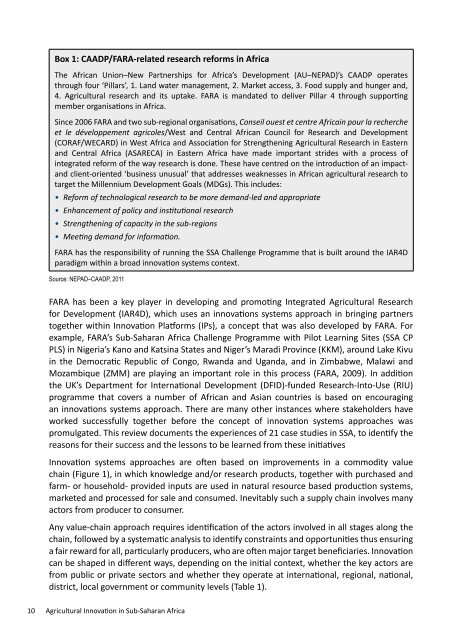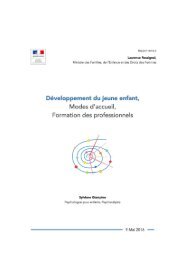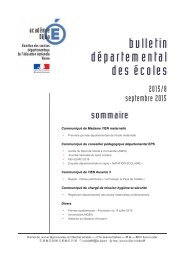agrl_innovations_in_ssa.pdf?utm_content=buffercb41d&utm_medium=social&utm_source=twitter
agrl_innovations_in_ssa.pdf?utm_content=buffercb41d&utm_medium=social&utm_source=twitter
agrl_innovations_in_ssa.pdf?utm_content=buffercb41d&utm_medium=social&utm_source=twitter
Create successful ePaper yourself
Turn your PDF publications into a flip-book with our unique Google optimized e-Paper software.
Box 1: CAADP/FARA-related research reforms <strong>in</strong> Africa<br />
The African Union–New Partnerships for Africa’s Development (AU–NEPAD)’s CAADP operates<br />
through four ‘Pillars’, 1. Land water management, 2. Market access, 3. Food supply and hunger and,<br />
4. Agricultural research and its uptake. FARA is mandated to deliver Pillar 4 through support<strong>in</strong>g<br />
member organisations <strong>in</strong> Africa.<br />
S<strong>in</strong>ce 2006 FARA and two sub-regional organisations, Conseil ouest et centre Africa<strong>in</strong> pour la recherche<br />
et le développement agricoles/West and Central African Council for Research and Development<br />
(CORAF/WECARD) <strong>in</strong> West Africa and Association for Strengthen<strong>in</strong>g Agricultural Research <strong>in</strong> Eastern<br />
and Central Africa (ASARECA) <strong>in</strong> Eastern Africa have made important strides with a process of<br />
<strong>in</strong>tegrated reform of the way research is done. These have centred on the <strong>in</strong>troduction of an impactand<br />
client-oriented ‘bus<strong>in</strong>ess unusual’ that addresses weaknesses <strong>in</strong> African agricultural research to<br />
target the Millennium Development Goals (MDGs). This <strong>in</strong>cludes:<br />
• Reform of technological research to be more demand-led and appropriate<br />
• Enhancement of policy and <strong>in</strong>stitutional research<br />
• Strengthen<strong>in</strong>g of capacity <strong>in</strong> the sub-regions<br />
• Meet<strong>in</strong>g demand for <strong>in</strong>formation.<br />
FARA has the responsibility of runn<strong>in</strong>g the SSA Challenge Programme that is built around the IAR4D<br />
paradigm with<strong>in</strong> a broad <strong>in</strong>novation systems context.<br />
Source: NEPAD–CAADP, 2011<br />
FARA has been a key player <strong>in</strong> develop<strong>in</strong>g and promot<strong>in</strong>g Integrated Agricultural Research<br />
for Development (IAR4D), which uses an <strong><strong>in</strong>novations</strong> systems approach <strong>in</strong> br<strong>in</strong>g<strong>in</strong>g partners<br />
together with<strong>in</strong> Innovation Platforms (IPs), a concept that was also developed by FARA. For<br />
example, FARA’s Sub-Saharan Africa Challenge Programme with Pilot Learn<strong>in</strong>g Sites (SSA CP<br />
PLS) <strong>in</strong> Nigeria’s Kano and Kats<strong>in</strong>a States and Niger’s Maradi Prov<strong>in</strong>ce (KKM), around Lake Kivu<br />
<strong>in</strong> the Democratic Republic of Congo, Rwanda and Uganda, and <strong>in</strong> Zimbabwe, Malawi and<br />
Mozambique (ZMM) are play<strong>in</strong>g an important role <strong>in</strong> this process (FARA, 2009). In addition<br />
the UK’s Department for International Development (DFID)-funded Research-Into-Use (RIU)<br />
programme that covers a number of African and Asian countries is based on encourag<strong>in</strong>g<br />
an <strong><strong>in</strong>novations</strong> systems approach. There are many other <strong>in</strong>stances where stakeholders have<br />
worked successfully together before the concept of <strong>in</strong>novation systems approaches was<br />
promulgated. This review documents the experiences of 21 case studies <strong>in</strong> SSA, to identify the<br />
reasons for their success and the lessons to be learned from these <strong>in</strong>itiatives<br />
Innovation systems approaches are often based on improvements <strong>in</strong> a commodity value<br />
cha<strong>in</strong> (Figure 1), <strong>in</strong> which knowledge and/or research products, together with purchased and<br />
farm- or household- provided <strong>in</strong>puts are used <strong>in</strong> natural resource based production systems,<br />
marketed and processed for sale and consumed. Inevitably such a supply cha<strong>in</strong> <strong>in</strong>volves many<br />
actors from producer to consumer.<br />
Any value-cha<strong>in</strong> approach requires identification of the actors <strong>in</strong>volved <strong>in</strong> all stages along the<br />
cha<strong>in</strong>, followed by a systematic analysis to identify constra<strong>in</strong>ts and opportunities thus ensur<strong>in</strong>g<br />
a fair reward for all, particularly producers, who are often major target beneficiaries. Innovation<br />
can be shaped <strong>in</strong> different ways, depend<strong>in</strong>g on the <strong>in</strong>itial context, whether the key actors are<br />
from public or private sectors and whether they operate at <strong>in</strong>ternational, regional, national,<br />
district, local government or community levels (Table 1).<br />
10 Agricultural Innovation <strong>in</strong> Sub-Saharan Africa






